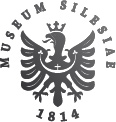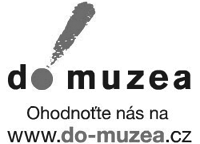Slezský sborník
rok 2013
ročník 111
číslo 1
Obsah / Contents
Studie / Articles (s. 5–120)
Martin ČAPSKÝ: Komunikační sítě vratislavské diecéze v době pozdního středověku
s. 5–18
Communication networks of Wrocław diocese in the Late Middle Ages
In the time of Hussite wars the need of quick transmission and processing of information increased in the territory of Silesian princedoms. The leading character of the association of Silesian princes was the Wrocław bishop, who also managed the bureaucratically largest communication network. The study deals with the issue of the integration degree of administration structures of the diocese into political appearance of Wrocław bishops. Mainly preserved accounting sources of chapters and episcopal castle Jelcz are analysed. The author follows the thesis according to which the bishop was entirely dependent on the background of his immediate goods in his political appearance and did not use the administrative structures of the diocese when transmitting messages and exchanging information with his political partners.
Key Words: Silesia, Middle Ages, communication, church administration
Małgorzata Konopnicka: Socio-Economic Structure of Upper-Silesian Nobility in the Light of Vassal Tables of 1752
s. 19–38
Společensko-ekonomická struktura hornoslezské šlechty ve světle soupisů leníků z roku 1752
When Silesia was taken over by Prussia after 1740, the former Habsburg province was subjected to transformations meant to integrate it with the remaining parts of the Hohenzollern monarchy. The structural integration was accompanied by statistical endeavors aiming at thorough examination of the social and economic potential of the province. The vassal tables of 1752 are a typical example. They contained a census of nobility by name, which also featured information concerning the number of their estates, their location, topography and the type of duty, as well as male offspring and their occupations. As the source divides the data according to territorial distribution by district, it is possible to research the specifics of the socio-economic situation of Upper-Silesian nobility.
Key Words: nobility, Upper-Silesian nobility, Frederick II, Upper Silesia, vassal tables
Marzena Bogus: Cenzura czy troska, czyli „Spis książek poleconych i zakazanych“ Jana Śliwki z 1899 roku
s. 39–60
Censorship or concern or “Record of books recommended and forbidden” by Jan Śliwka from 1899
The content of the article is the censorship of books aimed at children and youth in the Těšín region. It describes both outer state censorship of literature and inner censorship which concerned the attitude of pedagogues themselves. Teachers’ worries related mainly to the opinion that some titles could have bad influence on moral and psychological-social development of children and youth.
Key Words: censorship, literature, lessons, lower education, teachers
Martin Jemelka – Ondřej Ševeček: Německé podnikání Baťova koncernu: Studie k hospodářským a sociálním dějinám hornoslezského továrního města Ottmuth (Otmęt) – část I
s. 61–86
Baťa concern’s German business activities: A study of the economic and social history of the Upper Silesian company town of Ottmuth (Otmęt)
The present study focuses on an important chapter in the history of the Baťa concern involving its penetration into the German market and its decision to establish a production factory and network of stores and services in Upper Silesia, in the locality of Ottmuth (today Otmęt). The study traces in detail the concern’s efforts to establish its specific enterprise system in the German environment, and to implement its own model of the so-called company town in the building of Ottmuth. Despite the fact that the study concentrates mainly on the development of the enterprise and the company town of Ottmuth until 1945, it endeavours, within the limitations of available source materials, to identify long-term developmental trends of this industrial locality and to place it in the relevant context of economic and social history. In view of the fact that this is the first study on the topic, it also aims to recapitulate facts established through archival research and to provide an overview, so that they may serve as a point of departure for further investigation. From the perspective of the topics and problems covered, the study is meritoriously focused on the issue of the economic and social development of the concern enterprise Deutsche Schuh-Aktien Gesellschaft Bata, Ottmuth A.G., including its successor companies (OTA Schlesische Schuh-Werke Ottmuth A.G.), and on the programme it implemented in building the company town of Ottmuth. The study traces the main milestones of the company’s organisational structure as well as its economic development, issues involving the organisation of labour, social and employment policies, the building of the company town and – sources permitting – also the relationship of the company management to state and local administrative institutions. The study concludes by outlining the Ottmuth factory’s main developmental milestones after 1945, when the entire region became part of Poland in the aftermath of World War II.
Key Words: Baťa concern, Upper Silesia, Ottmuth (Otmęt), Zlín, company towns, footwear industry, economic history, social history, National Socialism, 1929–1955(1989)
Martin Krůl – Joanna Lusek: Żołnierze Armii Czerwonej w obozach jenieckich w Lamsdorf i Teschen: Stan badań
s. 87–106
Red Army soldiers in POW camps in Lamsdorf and Teschen: The state of studies
The paper is an introduction to a problem of Red Army soldiers in POW camps of Lamsdorf and Teschen. So far this issue has not become a subject of an individual elaboration although it concerns a large number of nations and many thousand people. A review of the studies relating to the above-mentioned problem is presented using the following division: thematic articles devoted to POWs camps in Lamsdorf and Teschen in general or to various aspects of their internment (the highest number of such works deals with Soviet POWs), relations of prisoners of war, monographs and academic or scientific-popular papers devoted to camps or broader problems within the subject matter of POW related issues. The paper also shows the different character of studies on particular groups of POWs. It is concluded with the postulate which suggests preparation of a collective monograph devoted to the question of the Red Army soldiers in the complex camps in Lamsdorf and Teschen.
Key Words: Prisoners-of-War, Complex of Prisoners-of-War Camps in Lamsdorf and Teschen, Stalag VIII B Lamsdorf, Stalag VIII F Lamsdorf, Stalag VIII D Teschen, Stalag VIII B Teschen
Jan KUBICA: Die Nachkriegszeit im Werk von Ota Filip
s. 107–120
Post-war period in the literary work by Ota Filip
The contribution contains an issue of post-war period in the journalistic and fictional texts by Ota Filip. In his work the other thematic fields rise from this main topic – the end of the Second World War, collaboration, resettlement of Sudeten Germans and the Czech-German relationships. Many of Filip’s texts are autobiographically oriented, but especially in the journalistic texts, reviewers consider the author as impartial. Filip can speak both Czech and German literary language, he is aware of social-historical context, he is objective and critical. Moreover, he knows Czech and German cultural sphere properly.
Key Words: post-war period, collaboration, resettlement, autobigraphies, Czech-German relationships
Diskuse / Discussion (s. 121)
Recenze / Reviews (s. 122–136)
Zprávy o literatuře / Brief Notices (s. 137–152)
Kronika / Chronicle (s. 153–157)
Bibliografická příloha / Bibliography (s. 158–159)
Poslední aktualizace článku: 06.10.2015
Vytisknout celý článek







